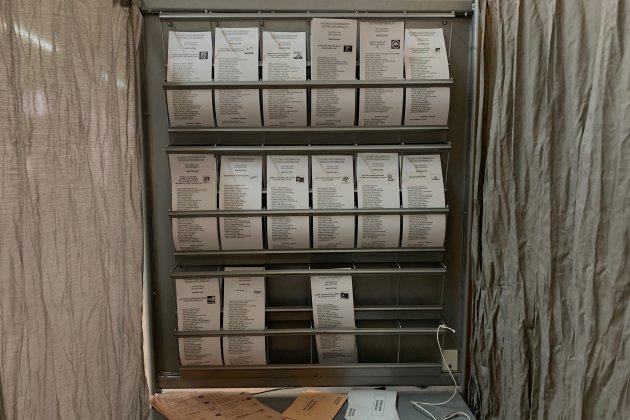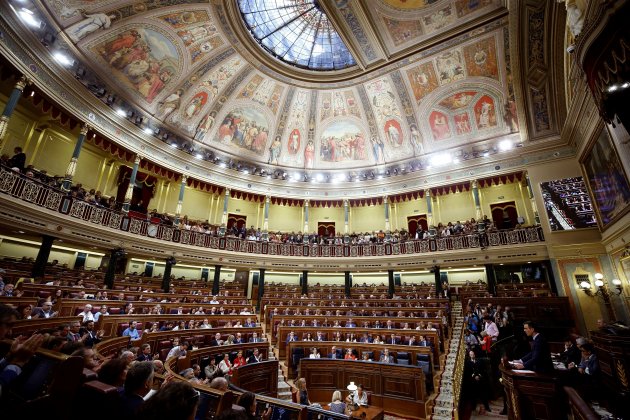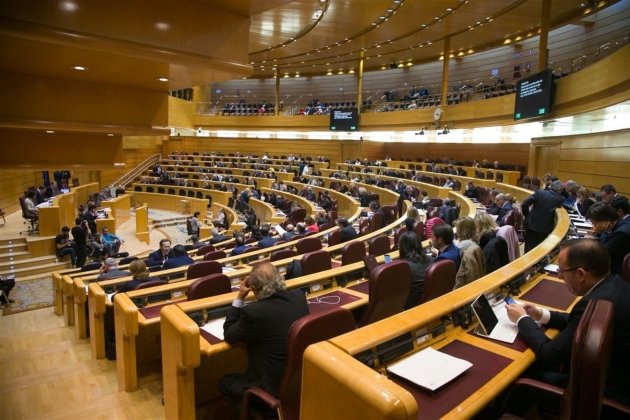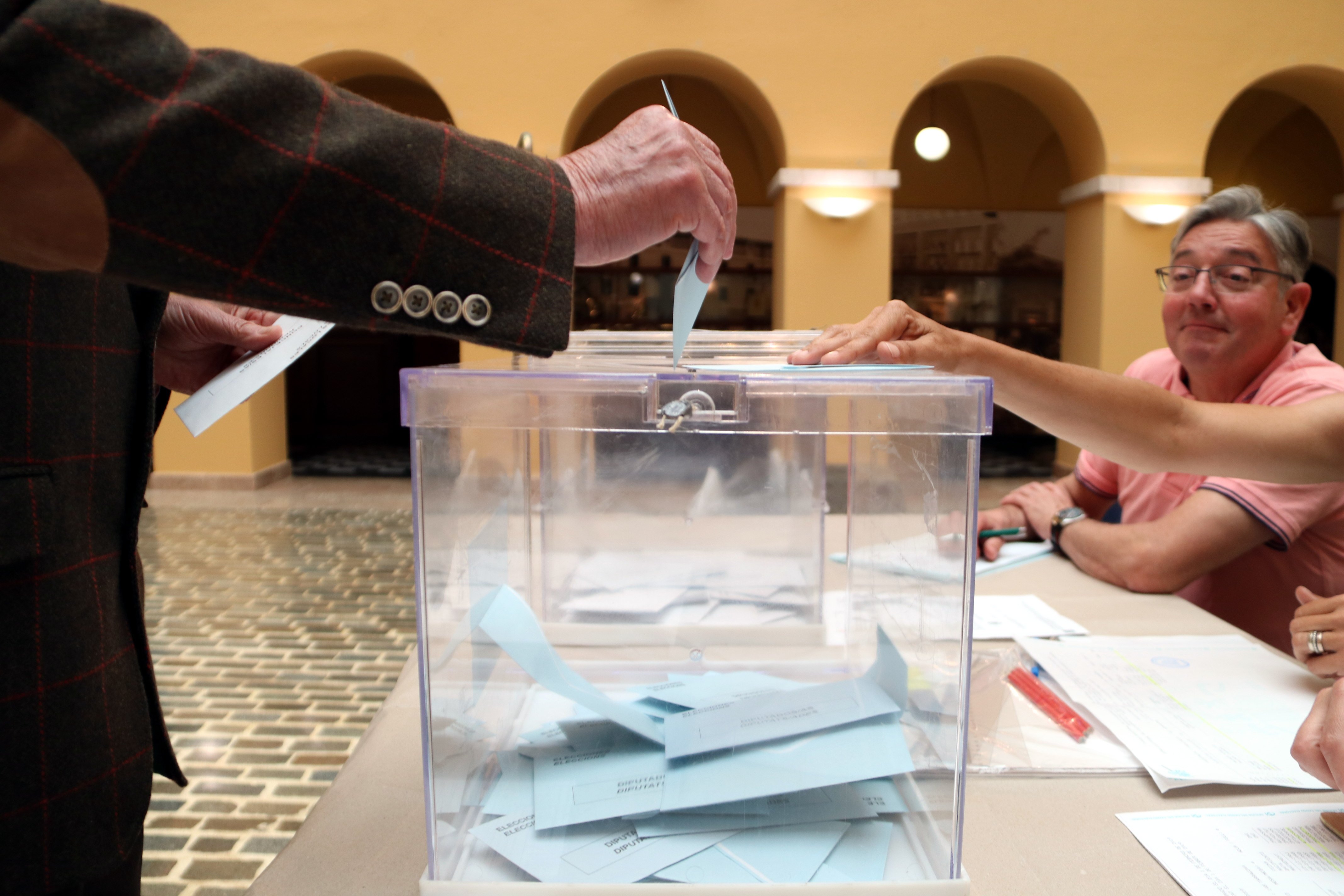Spain is holding an early election. The sweltering summer appointment at the polling stations, on Sunday, July 23rd, was called by prime minister Pedro Sánchez after his Socialist (PSOE) party was well beaten in the municipal and autonomous community elections held on May 28th. Prime ministers usually call snap elections claiming that they wish to give their country some electoral clarity, but in the case of Spain, recent general elections have created as much confusion as they've solved: in both 2015 and 2019, Spaniards were forced to return to the polls months after their first vote due to the inability of any party to form a government. And the last executive to be thrown out in Spain, was done not by the voters but by MPs in a no-confidence vote, on June 1st, 2018. That consigned the PP's Mariano Rajoy to the opposition and brought Pedro Sánchez into the Moncloa government palace that he has occupied ever since.
This time, most of the polls put Albert Núñez Feijóo's Partido Popular in the lead, in terms of voter support. But what does a Spanish party need to achieve in terms of votes and seats to 'win'? How is a government formed? What are the obligations for voters? Here's a guide to how general elections work in Spain.
The basics
Up for election are all 350 seats in the Congress of Deputies, the Spanish lower house. Deputies for the Congress are elected by a version of proportional representation called the D'Hondt method. Voters will also be casting ballots for the Senate, but in fact, no one really worries too much about what happens in the upper house. That's because, in terms of deciding who gets to govern, it is the distribution of seats in Congress which decides almost everything. And the magic number that the major parties will be aiming for is 176 seats, an absolute majority in Congress.
If no party reaches an absolute majority on their own (not achieved since 2011 in Spain and unlikely in 2023), negotiations and pacts will have to take place. After the last election, in November 2019, the Socialists and Unidas Podemos made a post-election deal. This didn't give them an absolute majority, but, after negotiating further support, they were able to form a government at the second investiture vote in January 2020, when a candidature only needs a simple majority in Congress. Thus the Pedro Sánchez government was formed by 167 votes to 165, helped by the crucial abstentions of two pro-independence parties, Catalonia's ERC and the Basque party EH Bildu

Voting booth with candidacy lists / Photo: Sergi Alcàzar
Any Spanish citizen over 18 years of age can vote, whether they are resident in Spain or abroad, as long as they are registered on the relevant electoral roll and haven't had their right to vote revoked by a court. Although many foreigners resident in Spain can vote in municipal and European elections, they cannot do so in general elections: you have to be a citizen.
For those who can't vote in their own electorate on polling day, the system in Spain is quite complex: the main option is a postal vote which has to be requested at a post office (at least 10 days before the election); voting papers are then sent by mail to the voter's address; once received, they must be correctly returned to a post office to cast the actual vote (no less than 5 days before the election). Given the summer holiday date of this year's election, it is not surprising that requests for postal votes have reached record figures, while many commentators are also predicting high voter abstention.
Election timetable
In theory, Spain holds a general election every four years; in practice, there were two within six months in 2015-16, and two more within seven months in 2019 - due to the inability of MPs to elect a government, after the fragmented election results. The current legislature was not scheduled to end until December this year, but Sánchez decided to bring forward the day of decision. Since 1986, Spanish general elections have always been held on Sundays. Polls on July 23rd will be open from 9am to 8pm.

The formal election campaign runs for 15 days. No voting intention survey may be published in Spain in the five days prior to voting, although newspapers often find creative ways around this restriction. For example, especially in the age of the internet, polls can be published in the media in other countries. The day immediately prior to the election is known as the "day of reflection". During that day, no election advertising can be broadcast, nor can any campaign rallies be held, the theory being it allows the public to consider their vote without any direct pressure. Again, the day of reflection has, in practice, become somewhat diluted since the social media era began.
Voting for Congress
The Spanish Congress currently has 350 members. The autonomous cities of Ceuta and Melilla elect one representative each. The other 50 provinces act as multi-member constituencies. Each starts with two seats, the remaining 248 are then shared out proportionally based on population. This means that, for example, in Catalonia this election, Lleida will elect 4 members of parliament, Girona and Tarragona 6 each, and Barcelona 32.

Spain's Congress / Photo: EFE
In each province, parties or groups standing for election provide an ordered list of candidates for the seats. So what voters actually do is choose one of these lists: physically, you take the ballot paper for the party you want - you don't have to mark it at all for the Congress list vote - and put it in an envelope, and that's what goes in the ballot box.
Once the votes have been counted up, the seats for each province are distributed proportionally based on the D'Hondt method. How does that work? Well, first, any lists which didn't win at least 3% of the vote in that constituency are discounted.
Then, the parties' total votes are put in the first column of a grid. In the second column go those totals divided by two, in the third, the totals divided by three, and so on. The seats are then distributed from the largest number in the grid, followed by the second largest and on until they're all allocated. An example: imagine three parties stand in a province and get, respectively, 100,000, 60,000 and 45,000 seats. The grid we obtain is the following:
Party A: 100,000; 50,000; 33,333...
Party B: 60,000; 30,000; 20,000...
Party C: 45,000; 22,500; 15,000...
Party A would get the first seat and Party B the second seat as 100,000 and 60,000 are the largest numbers in the table. If there is a third seat to allocate, however, it doesn't go to Party C, but to Party A, because 50,000 is bigger than 45,000. Party C would then get the fourth seat, but Party A would get a third seat before Party B gets their second (33,333 is bigger than 30,000).
One of the consequences of this system, proportional but based on "provinces", is that a regionally-based party centred in just a few constituencies can be favoured over a minor party that might get the same number of votes but spread over the entire Spanish state. Another issue is that voters in electorates that are smaller population-wise - like Lleida, Girona and Tarragona in Catalonia - have more risk of casting a wasted vote if they vote for small parties than those in, say, Barcelona. In the last election in Barcelona constituency, for example, the 32 available seats were shared between eight different parties. In the other three Catalan electorates, which elected only 4-6 MPs, only 3-4 parties won seats in each. This is part of what some political parties are talking about when they campaign for the "useful vote" - they call on voters to vote for them, because, they say, they are likely to win seats in the voters' constituency.
Voting for Senate
The Senate may be the Spanish upper house, but in most regards it is definitely the lesser partner in an asymmetrical bicameral system. While it has certain constitutional powers, in the day-to-day of the legislature, Congress decides almost everything. Moreover, due to the Senate voting system (a plurality-at-large system), the party which wins the largest number of seats in Congress has in general controlled the Senate. Thus when Spaniards cast their votes for 208 of the current 265 seats in the Senate on July 23rd, a large number will, more or less automatically, vote for the same party as they do for Congress and be done with it.
There are, in fact, two types of senator. 57 are nominated by the parliaments of the autonomous communities, starting with one each then another for each million people that live in their territory. In 2019, this meant the Senate actually reduced from 266 to 265 members in total, as the population of the Valencian Community had shrunk.
The remaining 208 members of the Senate are directly elected by voters. There are four for every province on the Iberian peninsula, plus varying numbers each for Ceuta, Melilla and the islands making up the Balearic and Canary Islands.

Spanish Senate / Photo: Europa Press
As with Congress, parties provide lists of candidates for the Senate, the same number as seats available in each constituency. Other than on the islands that only elect one senator anyway, voters choose one fewer candidate than the number of senators in their area. In other words, in the peninsular provinces, they can choose up to three names. Although listed by parties, the candidates are considered to be individuals, so voters can vote for members of more than one party, and candidates whose names appear anywhere on the list for the individual party. So, in theory, if someone wanted to vote for the people that three different parties had listed at number four, they are free to do so. The votes are counted for each individual, those who receive the most votes are elected.

